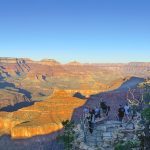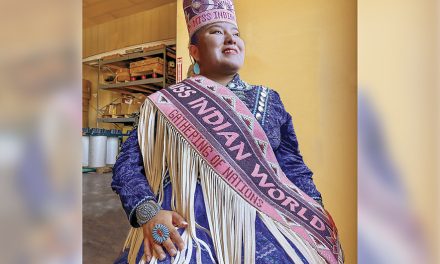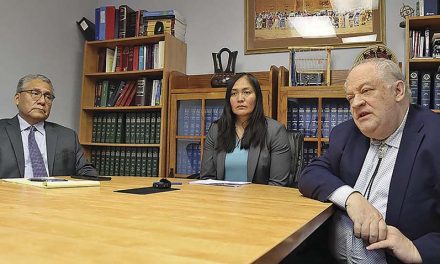
Lukachukai Mountains Mining District added to the National Priorities List
WINDOW ROCK – The U.S. Environmental Protection Agency added five sites to the Superfund National Priorities List. One of the sites included was the Lukachukai Mountains Mining District.
This is the first Navajo Nation area designated as a federal “Superfund site,” which requires investigation and cleanup of hazardous releases and is used by the federal government to prioritize funding for this work.
The EPA Superfund program identifies sites that may pose definite or potential threats to public health or the environment from contamination in groundwater, surface water, soil, and air.
Despite the mining district’s legacy of contamination, which dates back to the Cold War era, when 700 mines were operational, the EPA added its first-ever Navajo site to the Superfund list.
In 1944, private companies extracted 30 million tons of uranium metals from Diné Bikéyah for about 40 years.
More than 800,000 cubic yards of mine waste remains in mine piles scattered like dirt.
The Lukachukai Mountains Mining District is located in the Cove, Lukachukai, and Round Rock chapters.
In March, the EPA announced the added sites to the National Priorities List, a list of known sites throughout the U.S. with its territories where historic releases of hazardous substances, pollutants, or contaminants pose significant threats to human health and the environment.
Last March, the Lukachukai Mountains Mining District was proposed to be added to the National Priorities List.
The site includes a hundred mine waste piles from former mines where past uranium and vanadium mining in the Lukachukai Mountains created waste piles, the EPA states.
Contaminated with radium-226, uranium, and additional heavy metals, waste from the piles drifted into washes and affected groundwater, which continues to impact surface water.
The EPA states that past ore hauling actions may have spread contamination along miles of mountainous haul roads.
Many Diné families reside in the Lók’a’ch’égai Mountains, which they use for livestock grazing, recreation, and hunting. Additionally, the mountains provide medicinal plants for traditional ceremonial uses.
According to the EPA, the Bipartisan Infrastructure Law invests $3.5 billion in environmental remediation at Superfund sites. It reinstates the Superfund chemical taxes, making it one of the most significant investments in American history to address the harsh realities of cleaning up hazardous sites.
The EPA states that along with Lukachukai Mountains Mining District, the former Exide Technologies Laureldale in Laureldale, Pennsylvania, Acme Steel Coke Plant in Chicago, Exide Baton Rouge in Baton Rouge, Louisiana, and Lot 46 Valley Gardens TCE in Des Moines, Iowa, will be added to the Superfund site.








 Highway 264,
Highway 264, I-40, WB @ Winslow
I-40, WB @ Winslow